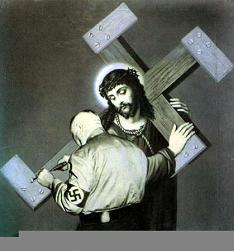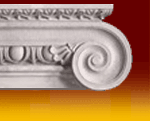|
Dada was a literary/artistic movement in Russia based on nihilism (in philosophy, the belief that without higher authority
(eg God) values and morals are essentially baseless) and its protests against Western principles, specifically militarism
during and after the First World War. It is believed that the word dada was chosen at random from a dictionary by Tristan
Tzara in 1916 when he founded the movement along with Hugo Ball, Jean Arp and several other intellectuals. Two similar upheavals
against conventional art occurred concurrently in New York (led by Man Ray, Marcel Duchamp and Francis Picabia) and in Paris,
where Dadaism became the inspiration for Surrealism.
In order to protest against cultural and social values, Dadaists would often deliberately create artistic or literary
works that were incomprehensible. Theatrical performances were written to be offensive or confusing in order to compel the
viewing public to reconsider their own tastes and artistic values. The Dadaists therefore used materials and methods they
assumed not to have been used before to create their artworks, such as composing pieces using waste and discarded objects
they found in the streets.
The movement dissolved in the 1920's, and in France it became the main inspiration for Surrealism. However in New York
in the 1950's several composers, writers and artists used Dadaist techniques to create their works.

"The Cross Was Not Heavy Enough" - John Heartfield
This is an example of a painting created after the disintegration of the Dadaist movement with typical Dadaist features.
This work protests against the manipulation of religion for the sake of militarism and the glorification of the Nazi doctrine.
Back
|

